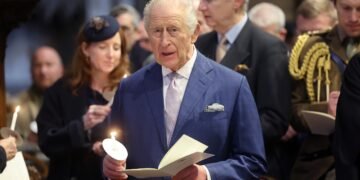This year marks the 100th anniversary of (some) women getting the vote in England, thanks to the Suffragette movement. They made feminism a topic not to be ignored and due to their influences, women in the United Kingdom today have more equal rights than ever before, but Mary Astell, a writer who was a philosopher, writer and advocate for equal educational opportunities for women, was arguably England’s first feminist, who influenced the Suffragettes.
Mary Astell’s early life:
Mary Astell was born on 12th November 1666 to a middle class family in Newcastle-Upon-Tyne. Mary was named after her mother; her father, Peter Astell, was a manager at a coal company. He had strong religious views as a Conservative Royalist Anglican, which had an influence on Mary throughout her life and her work. She had two brothers but only her younger brother, Peter, survived infancy.

Mary had no formal education, but gained a little informal education at the age of eight. She was taught by her uncle, Ralph, an ex-clergyman (due to alcoholism) and who had an affiliation with a philosophical school in Cambridge.
Any chance of a formal education was dashed when Mary was 12 years of age and her father died. This meant that the remaining money the family had was poured into her brother’s education. Mary and her mother also had to move in with her aunt, where there were no opportunities for formal or informal education.
When Mary was 22, she lost both her mother and aunt, and moved to Chelsea in London. It is here that Astell became friends with a group of influential literary women. Some of these women included Judith Drake, an intellectual and author who wrote “An Essay in Defence of the Female Sex”; Lady Mary Chudleigh who wrote feminist poetry; and Lady Mary Worley Montagu, an aristocrat, writer and poet who introduced and advocated for smallpox vaccinations in England. Another influential figure Mary met was the Archbishop of Canterbury, William Sancroft. This is where Mary started to be able to voice her feminist views….
A career as ‘the first feminist’
Mary was greatly supported by her peers. The literary women she surrounded herself with helped her develop and publish her works. The Archbishop of Canterbury provided financial support to the budding writer and introduced her to publishers.
Mary’s main message in her works was that females were as rational as men and therefore, deserved the right to education too. She published many works, as you can see from the list below:
- A collection of Poems. (1689) To Sancroft.
- A Serious Proposal to the Ladies for Advancement of their True and Greatest Interest Part 1 (1694), Part 2 (1697)
- Some reflections on Marriage. (1700)
- A Fair Way with the Dissenters; An Impartial Inquiry into the Causes of Rebellion and Civil War in this Kingdom. (1704)
- The Christian Religion, as Profess’d by a Daughter of the Church of England. (1705)
Astell also attributed to other publications, such as:
- An Essay in Defence of the Female Sex. (1696)
- Six Familiar Essays Upon Marriage, Crosses in Love, Sickness, Death, Loyalty and Friendship. (1696)
Throughout all these publications, Mary found much support, but also opposition from contemporary men of the time. This included John Locke, John Norris and Daniel Defoe, who openly wrote in their own works the impracticality and disadvantages of Astell’s theories. However, she tried to reason with philosophy rather than examples from history (which had not been done prior to Astell), which gained her respect from both men and women of the time.
The main two popular publications that Astell published were “A serious proposal ….” and ” Some Reflections on Marriage”.
A serious proposal …
Astell addressed women readers to encourage them to study and gain knowledge, in order to be a better Christian, wife and mother. She presented an educational plan for an all women’s college, in the style of a nunnery. This was suggested to stop any external influences from the patriarchal society. Mary suggested that women should learn about religion and other secular topics. This plan was never put into practice as people thought it was ‘too catholic’, however, she did manage to influence one of her critics, Daniel Defoe. He called Mary’s plan ‘impractical’ but when he wrote “Essay Upon Projects” (1697), his recommendation for an all woman academy sounded very similar to Mary’s plan.

Some Reflections Upon Marriage
This publication focussed on sharing Astell’s views to persuade society of women’s worth. She discussed how a wife should be equal to a husband, in order to have a fortunate and happy marriage. She also discussed how women should think of themselves as more than property to men. One of the quotes in this publication, is one of the must used phrases in feminism: “If all men are born free, how is it that women are born slaves? As they must be if being subjected to the inconstant, unknown, arbitrary Will of Men, be the perfect Condition of Slavery”
Astell’s later life:
Mary retired from public life in 1709 and founded a charity Anglican school for daughters of pensioners in Chelsea Hospital, where she wrote the entire curriculum herself. At the age of 60, she moved in with her friend and patron, Lady Catherine Jones. She continued to live there until her death in 1731, when she died a few months after having a mastectomy to remove cancer in her right breast. During her last few days, Mary was alone – per her request – so she could spend time with God.
The impact of Mary Astell’s life and work
Mary Astell’s views may seem outdated to a modern feminist, due to the focus being on becoming a ‘good wife’. However, her views at the time were considered to be radical. She gave a voice to and started a discussion about the need for women to have equal formal education and the lack of equality women faced. She also gave way to a new approach to get feminist views across, using philosophy to support her arguments, which gained respect to feminist views and influenced feminists after her.
Most importantly, Mary encouraged other women to stand up for women’s rights and when Astell died, there was a motivated Mary Wollstonecraft to continue the educational reform of women, the fight that Astell began.
If you liked this article, there are references below to provide further information. Keep an eye out for my next article about the wonderful Mary Wollstonecraft, another early feminist who wrote shortly after Astell.
References:
- Astell, M. A Serious Proposal to the Ladies for the Advancement of their True and Greatest Interest. By a Lover of Her Sex. 1694, 1695, 1696 1697 (two printings), 1701, 1703
- Astell, M. Reason, Gender, Faith. Edited by William Kolbrener and Michal Michelson. Aldershot, 2007.
- Astell, Mary, 1668–1731, Some Reflections Upon Marriage, Occasioned by the Duke and Dutchess of Mazarine’s Case; Which is Also Considered, London: Printed for John Nutt, near Stationers-Hall, 1700.
- Backscheider, Paula R. Daniel Defoe: Ambition and Innovation (UP of Kentucky, 2015)
- Springborg, Patricia, Mary Astell: Theorist of Freedom from Domination (Cambridge, Cambridge University Press, 2005).
- Sutherland, Christine. The Eloquence of Mary Astell. (University of Calgary Press, 2005.)








